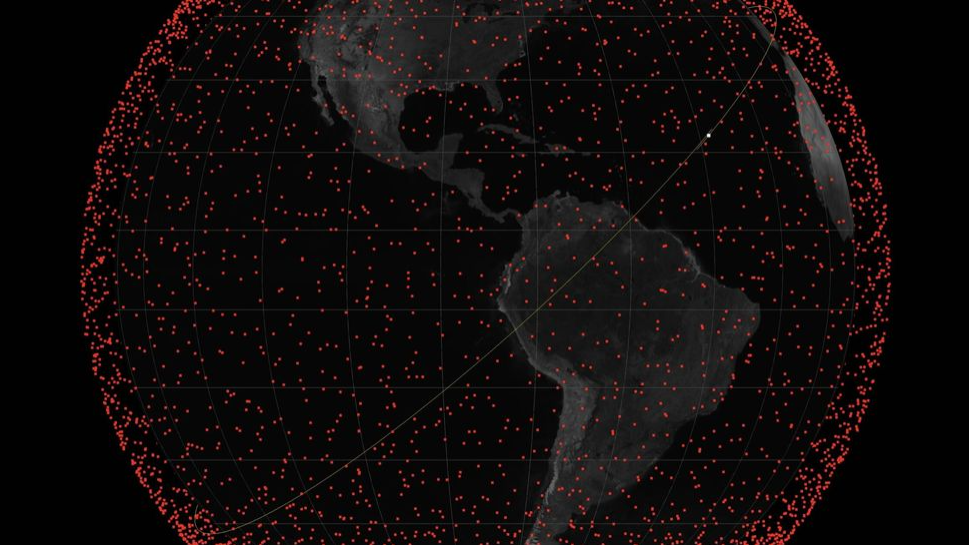
Elon Musk, the self-proclaimed emperor of Mars, is actually the king of low Earth orbit. With more than 50% of all Earth's satellites and the undeniable success of its reusable Falcon rockets, there is no debate about that topic. The savior of mankind wields unbridled power, which he does not hesitate to use for his own good and when it harms others. But to truly appreciate the extent to which they have invaded our space for their own monetary gain, you need to watch this visualization of the Starlink satellites in real time for a few minutes.
By confidential
Created by Will De Pue, an engineer who works in OpenAI's video generation department—it's clear and concise, though a bit overloaded with information. But you only have to look at the main part of the map of red dots that fit perfectly in the control room of Darth Vader's superstar destroyer to understand how out of hand his space invaders got.
Unnecessary development
The contrast with the real-time graph recorded in 2021 under these lines is significant. Starlink has grown steadily from the initial 120 units in 2019 to 960 in 2020, 1,920 in 2021, 3,840 in 2022, and the current 5,601 operational satellites. and counting. They now cover Antarctica and even the North Pole. SpaceX has sought approval from the Federal Communications Commission (FCC) and international organizations to deploy up to 42,000 Starlinks. This number represents a huge increase compared to its initial objectives which proposed about 12,000 satellites.
The Boca Chica, Texas-based company has accelerated deployment of its second-generation Starlink satellites, dubbed 'V2 Mini', starting on February 27, 2023 with 21 units. These satellites are designed to improve the capacity and speed of the Starlink network. Thanks to more powerful antennas capable of handling other frequencies, they offer up to four times the capacity of first-generation satellites. They also use Hall effect thrusters, a type of ion engines used by the Chinese space station and other probes. These thrusters use electricity to turn a noble gas such as argon or xenon into a jet of electrons, which pushes the satellite and stops its eternal orbital decline.
Click to continue reading Here.






